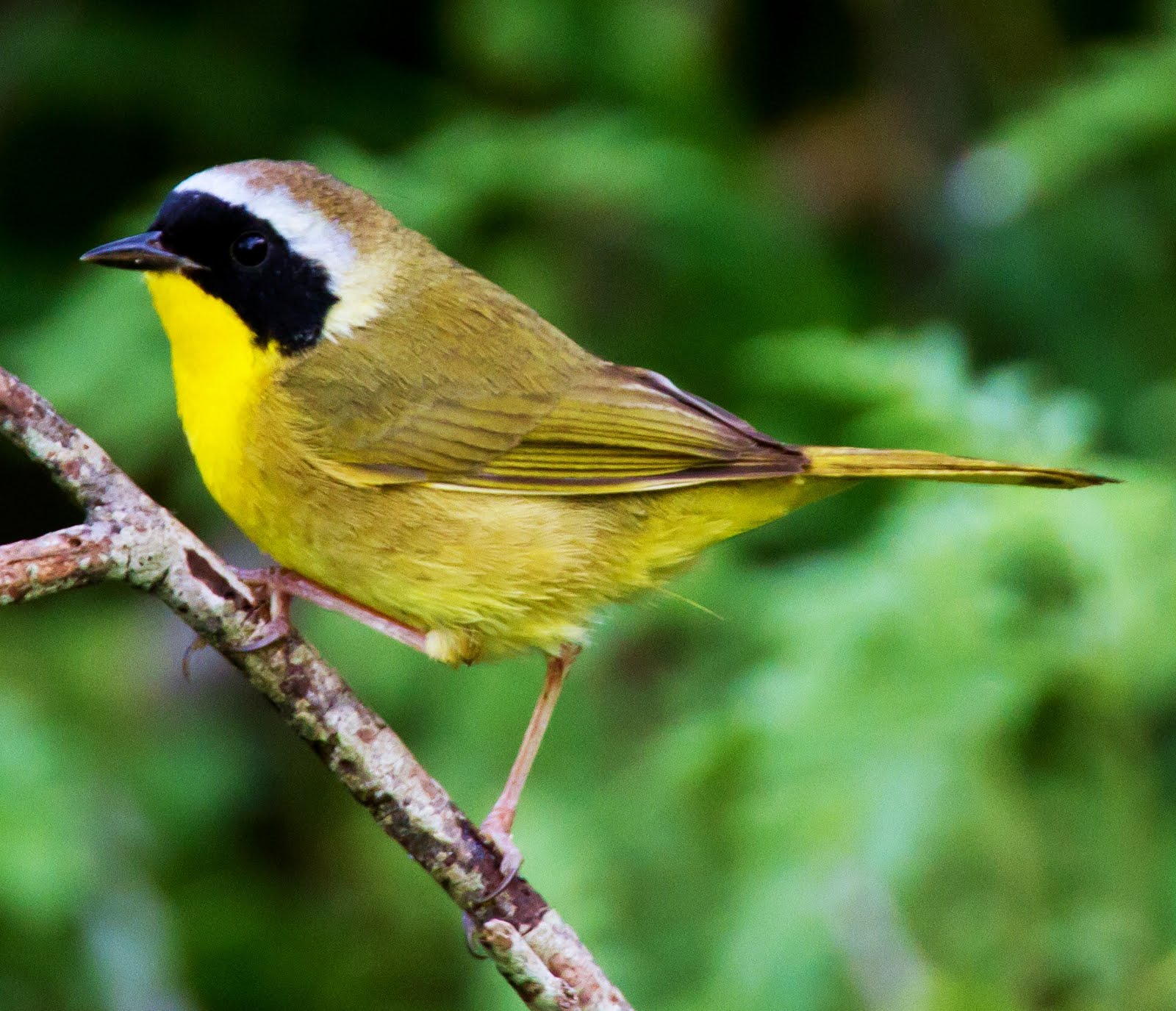Geothlypis trichas
 |
| Photo by Dan Pancamo (Wikipedia) |
Common name:
common yellowthroat (en); mariquita-de-mascarilha (pt); paruline masquée (fr); chipe de cara negra (es); weidengelbkehlchen (de)
Taxonomy:
Order Passeriformes
Family Parulidae
Range:
These birds breed across North America, from Alaska to Mexico, only being absent from the most arid regions of the southern United States. They winter further south, in the southern Unites States and across Central America and the Caribbean, down to northern Venezuela.
Size:
Common yellowthroats are 11-13 cm long and have a wingspan of 15-19 cm. They weigh 9-10 g.
Habitat:
These birds are found in non-forested areas, generally near the ground, occurring in wet scrubland, weeds or grasses along country roads or agricultural environments. They are also found in cattails, bulrushes, sedges, and willows by streamsides, swamps, freshwater, and salt-water marshes. They occupy similar types of habitats for both their breeding and wintering locations.
Diet:
These birds either sally or glean the vegetation for adult and larval insects, such as grasshoppers, dragonflies, beetles and butterflies, also eating spiders and sometimes seeds.
Breeding:
Common yellowthroats breed in April-July. They are mostly monogamous, although some cases of polyginy have been recorded. They nest is a loose bulky cup of grass and other plant materials, placed on or near the ground. there the female lays 3-6 white or cream-white eggs with dark speckles. The female incubates the eggs alone for 12 days, but the chicks are cared or by both parents, fledging 8-10 days after hatching. Each pair typically raises 2 broods per season.
Conservation:
IUCN status – LC (Least Concern)
This species has an extremely large breeding range and a global population estimated at 32 million individuals. Although the overall population trend is believed to be stable, the common yellowthroat has declined in many areas, possibly due to habitat loss and disturbance.







